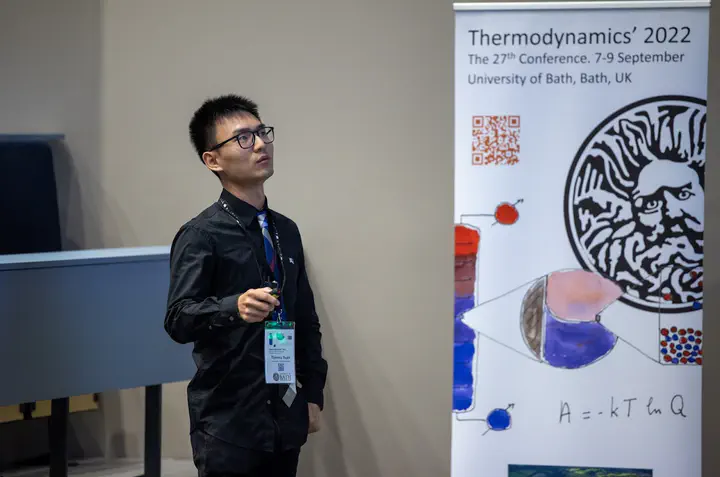Lattice model of fluid transport in mixed matrix membranes

Abstract
Mixed matrix membranes (MMMs) are promising materials for membrane gas separations. The idea of an MMM is to combine excellent separation performance of a filler material (common choices include Metal Organic Frameworks, zeolites, and carbon nanotubes/nanosheets) with the good processability and stability of the continuous phase (which is often a polymer material). Although this idea is very appealing and elegant in principle, practical implementation of MMMs faces a number of challenges related to how the filler phase is distributed within the continuous phase, defects at the interfaces between the two phases and so on. On a fundamental level, the detailed fluid transport mechanisms in a heterogeneous material, such as MMM, remain to be elucidated, and this prevents the development of rational approaches to engineering better MMMs.
Although the time- and length-scales of fluid transport in nanoporous materials can be tackled in atomistic simulation studies, a systematic screening for various materials and different morphologies is still too computationally demanding. On the other hand, computational fluid dynamic simulations oversimplify the physical transport phenomena in heterogeneous materials as these models ignore any interfacial effects. This leaves a gap in the current tools for studying fluid transport in heterogeneous materials.
In our previous study, we demonstrated that the dynamic mean field theory (DMFT) on lattice models can provide qualitatively accurate results comparing with atomistic simulations while taking 2-3 orders of magnitude less computational power. The DMFT also preserves the physical transport process making it a suitable tool for studying the fluid transport phenomena in heterogeneous materials. An example of filler, polymer, and MMMs in the lattice model is shown in Figure 1.
In this presentation, we demonstrate that a wide range of heterogeneous and disordered geometries can be created using lattice models. Combining with the DMFT calculations, useful insights can be extracted from the density and flux distribution within the structure. The permeability obtained from DMFT clearly shows that the fluid transport in heterogeneous materials does not obey the ideal theoretical models such as the Maxwell theory. This is predominantly due to the pore blockage mechanism at the interface between the two materials. In addition to the studies of the behavior of individual phases, we also extend the DMFT to explore the transport phenomena in MMMs as a function of the gas composition, solid-fluid interactions and other parameters that may influence the selectivity and permeability patterns.